After centuries of being dormant, Mount Vesuvius erupted in 79 C.E., blanketing Pompeii, Herculaneum, and other Roman settlements in volcanic ash.

Public DomainA set design for the 1825 Pacini opera L’ultimo giorno di Pompei or “The Last Day of Pompeii,” which depicts the horrifying 79 C.E. eruption of the Mount Vesuvius volcano.
Around 104 C.E., Pliny the Younger sat down to write a letter. “Though my shocked soul recoils, my tongue shall tell,” he told the Roman historian Cornelius Tacitus. Then, Pliny began to describe what he witnessed during the Mount Vesuvius eruption about 25 years earlier, in 79 C.E.
Before its eruption that year, Mount Vesuvius had been dormant for centuries, making up part of the idyllic natural landscape surrounding the Roman cities of Pompeii and Herculaneum, both of which were located in southern Italy near Naples. Herculaneum was a popular resort town for wealthy Romans; Pompeii was a prosperous and bustling city with opulent villas, bars, cafes, and bathhouses, and an arena that could seat 20,000.
Though people living in the region suffered through the occasional earthquake, they were unaware of how dangerous Mount Vesuvius was. Sources vary on whether the Romans thought it was extinct — or merely a large mountain — but at the time, chillingly, locals had no word for “volcano.”
Everything changed one day in 79 C.E., when the “mountain” started to rumble and shake. The Mount Vesuvius volcano eruption would devastate the region, kill thousands, and freeze Pompeii and Herculaneum in time.
The Lead-Up To The Mount Vesuvius Eruption

Museo Archeologico Nazionale di Napoli/Public DomainA fresco found in Pompeii’s House of the Centenary, which seems to depict the Mount Vesuvius volcano.
The story of the 79 C.E. Mount Vesuvius eruption actually began about 300,000 years ago, when the volcano first began to form. In the millennia leading up to the destruction of Pompeii and Herculaneum, it erupted several times — sometimes catastrophically. The “Avellino eruption” of 1995 B.C.E., for example, destroyed every Bronze Age settlement within 15 miles.
But that frightful history was soon largely lost. Pompeii was settled by the Greeks in the 8th century B.C.E. and was loosely under Roman rule after the Samnite Wars (a series of conflicts that lasted between 343 B.C.E. and 290 B.C.E.). Then, in 80 B.C.E., Pompeii officially became a Roman colony.
Pompeii — and nearby Herculaneum — soon flourished. As many as 20,000 people lived in Pompeii, and about 5,000 people lived in Herculaneum, which became a popular resort town for elite Romans.
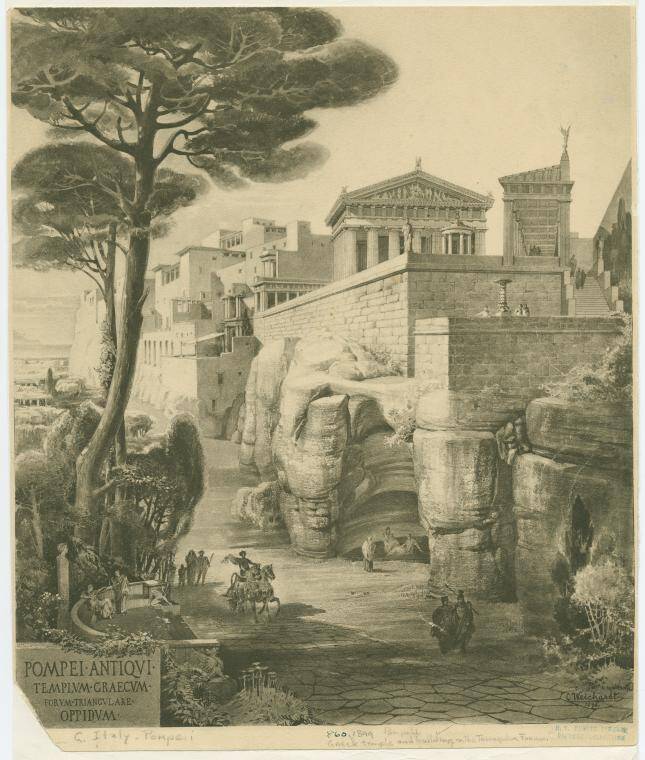
Public DomainA depiction of how Pompeii may have looked before its destruction during the Mount Vesuvius volcano eruption.
The cities benefited from the rich soil, which was a huge help to farmers. In Pompeii, wealthy citizens built impressive villas, and people of all classes enjoyed the city’s bustling squares, marketplaces, and amphitheater.
The first known harbinger of the Mount Vesuvius eruption came in 62 or 63 C.E., when a large earthquake struck the Campania region. A number of smaller quakes later followed, but many citizens shrugged them off. Such quakes were seen as normal. But they were actually warning signs.
The eruption of Mount Vesuvius would soon begin.
The Eruption Of Mount Vesuvius In 79 C.E.
In 79 C.E., the Mount Vesuvius eruption began. Traditionally, it was thought that the eruption occurred in August, but in recent years, evidence has shown that the eruption likely happened in October or November.
Pliny the Younger, who was then only 17 or 18 years old, observed the eruption from the other side of the Bay of Naples alongside his mother and his uncle, Pliny the Elder. Pliny the Younger later described the first moments of the catastrophic eruption in a letter to Tacitus.

Public DomainA 19th-century depiction of the Mount Vesuvius volcano eruption in 79 C.E., which destroyed Pompeii and Herculaneum.
“A cloud, from which mountain was uncertain, at this distance (but it was found afterwards to come from Mount Vesuvius), was ascending, the appearance of which I cannot give you a more exact description of than by likening it to that of a pine tree, for it shot up to a great height in the form of a very tall trunk,” Pliny the Younger recalled around 104 C.E.
Though Pliny the Younger and other Romans didn’t immediately realize it, Mount Vesuvius had erupted, spewing up a cloud of ash and pumice about nine miles into the atmosphere (today, this is known as a Plinian eruption).
By 1 p.m., a cloud of thick, swirling ash blocked out the Sun. Ash then began to fall like snow at a rate of about six inches per hour, accumulating on rooftops across the city of Pompeii. Then, pumice stones and other rocks started to rain down on the terrified residents.
Though thousands of people fled from Pompeii during the Mount Vesuvius volcano eruption, some 2,000 remained. They hunkered down in cellars or other sturdy stone structures and hoped to weather the disaster. But the eruption was only beginning, and things quickly grew more dire.

Public DomainThe Last Day of Pompeii by 19th-century painter Karl Bryullov, an illustration that depicts terrified ancient Romans fleeing during the Mount Vesuvius volcano eruption.
That night, a tidal wave of hot ash and gas galloped down the side of Mount Vesuvius, burning or suffocating anyone who had remained in nearby Herculaneum. Any survivors were quickly wiped out by another wave of volcanic mud and rock, which buried the city shortly after midnight.
The next morning, a pyroclastic flow — a mix of lava, volcanic ash, and hot gas, which can move as fast as 200 miles per hour — poured down the side of the Mount Vesuvius volcano toward Pompeii. Anyone left in the city died as the hot air burned their lungs and the debris buried their bodies.
As the volcano raged, Pliny the Younger and his mother eventually decided to flee (his uncle, Pliny the Elder, perished after he went to investigate the initial cloud over Vesuvius). In his letter to Tacitus, Pliny the Younger described the “faint and doubtful” light, the “convulsive motion of the earth,” and the looming cloud in the distance, “black and dreadful… broken with rapid, zigzag flashes, [revealing] behind it variously shaped masses of flame.”
“The ashes now began to fall upon us, though in no great quantity,” Pliny the Younger remembered. “I looked back; a dense dark mist seemed to be following us, spreading itself over the country like a cloud.”
Pliny the Younger also recalled “the shrieks of women, the screams of children, and the shouts of men… some lifting their hands to the gods; but the greater part convinced that there were now no gods at all, and that the final endless night of which we have heard had come upon the world.”

Art Institute ChicagoA 19th-century sculpture entitled “The Flight From Pompeii” by Giovanni Maria Benzoni. The Mount Vesuvius volcano eruption, which buried Pompeii and Herculaneum, has inspired countless art pieces.
In the end, some 2,000 people perished in Pompeii, and the Mount Vesuvius eruption killed an estimated 16,000 people in the region in total.
The Campania Region After The Catastrophe
In the immediate aftermath of the Mount Vesuvius eruption, the Roman Emperor Titus sent two magistrates to oversee relief in the Campania region. He also decreed that the estates of anyone who died without an heir would be used to help rebuild the destroyed cities. And the historian Cassius Dio wrote — more than a century later — that Titus even visited the battered region in person to distribute money and to meet with survivors.

Public DomainThe Roman emperor Titus oversaw the aftermath of the Mount Vesuvius eruption.
People returned to recover what they could — or to steal items — as the inscription Domus Pertusa on one Pompeii house suggests. According to History Extra, this translates to “house brought out” but could also mean “there’s nothing left in this one.” However, Pompeii and Herculaneum were basically deserted after the Mount Vesuvius volcano eruption.
Looters occasionally ravaged the site in the centuries that followed, and some surviving structures were repurposed. But even though an architect purportedly stumbled upon several erotic frescoes in 1599 — and allegedly covered them up again because of their sexual nature — Pompeii and Herculaneum were largely untouched until the 18th century.
Meanwhile, the Mount Vesuvius eruption of 79 C.E. was hardly the last. The volcano erupted in 203, 472, 512, 685, 787, 968, 991, 999, 1007, and, after centuries of staying quiet, again in 1660, 1682, 1694, 1698, 1707, 1737, 1760, 1767, 1779, 1794, 1822, 1834, 1839, 1850, 1855, 1861, 1868, 1872, 1906, 1929, and 1944. Some of these were not serious; others were. In 512, the Gothic king of Italy granted a taxation reprieve to people impacted by the eruption that year; in 1631, a large eruption buried several villages and killed 3,000 people.
The most recent eruption of Mount Vesuvius, in 1944, happened during World War II. The U.S. Army Air Force’s 340th Bombardment Group — stationed at Pompeii Airfield — soon found themselves in danger as ash and rocks rained down from the sky, and molten lava trickled down the side of the volcano.
“As I sit in my tent… I can hear at four- to 10-second intervals the loud rumbling of the volcano on the third day of its present eruption,” Sgt. Robert F. McRae wrote in his diary. “The noise is like that of bowling balls slapping into the pins on a giant bowling alley. To look above the mountain tonight, one would think that the world was on fire. The thickly clouded sky glows like that above a huge forest fire. Glowing brighter as new spouts of flame and lava are spewn from the crater. As the clouds pass from across the top of the mountain, the flame and lava can be seen shooting high into the sky to spill over the sides and run in red streams down the slopes.”
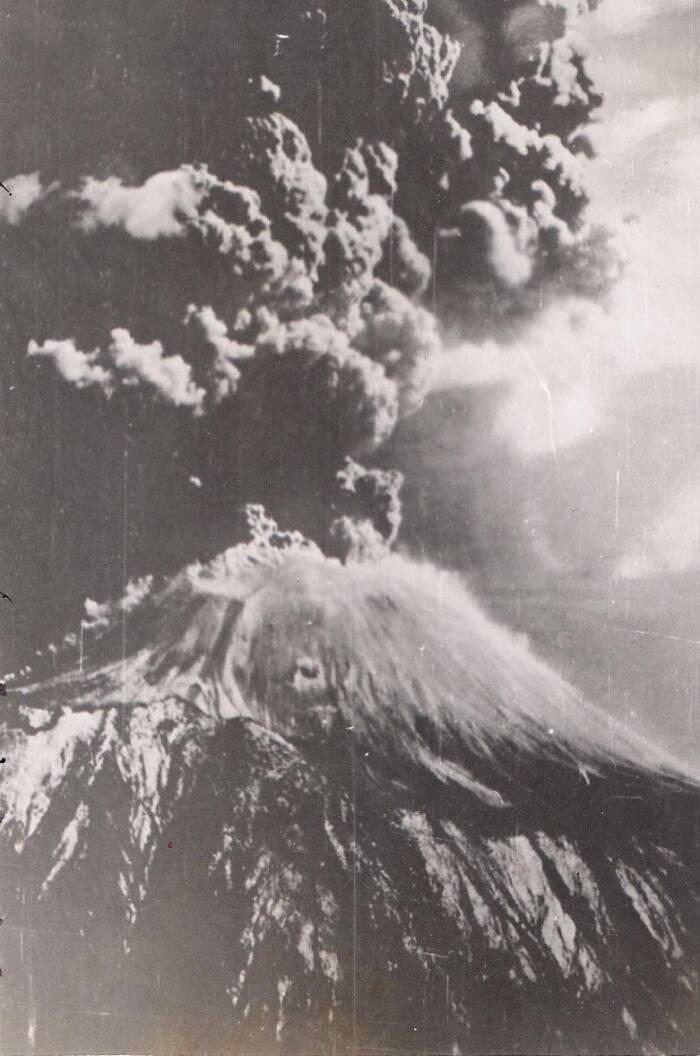
Public DomainThe 1944 eruption of Mount Vesuvius was severe enough that Allied forces nearby had to evacuate.
The soldiers evacuated and none were killed, though 26 Italian civilians died (and 12,000 people were displaced). Then, Mount Vesuvius quieted down.
Indeed, the volcano has not erupted since — though earthquakes have occasionally rocked the nearby region. And under the looming, silent shadow of Mount Vesuvius, archaeologists have made some incredible discoveries at the former sites of Pompeii and Herculaneum. In recent decades, their finds have ranged from the remains of victims to villas filled with frescoes.
The Bodies Of Pompeii And Herculaneum
As Mount Vesuvius roared and retreated over the centuries, the ancient Roman cities of Pompeii and Herculaneum slowly began to re-emerge from the ashes. In 1709, remains of Herculaneum were rediscovered, reportedly by accident. And in 1748, excavation began in Pompeii.

Public DomainExcavations in Pompeii near the end of the 19th century. Though early excavations were nothing more than “treasure hunts,” archaeological surveys of the site were formalized starting in the 1860s.
However, these early excavations were little more than “treasure hunts,” and thus poorly documented. More formal excavations came a century later, when Italian archaeologist Giuseppe Fiorelli took control of the project. He divided Pompeii into nine regions and numbered the insulae (blocks) to better document what he and other archaeologists found there.
Starting in the 1870s, archaeologists began to document pockets of air in the rubble that contained human bones. By injecting these air pockets with plaster, they were able to recreate the bodies of some of Pompeii’s victims, lying in the exact same positions they had died in hundreds of years ago. Many of these people died when Mount Vesuvius’ pyroclastic flow smashed through the town, dooming all in its path. The ash covering them preserved the shapes of their bodies even as their remains decomposed.
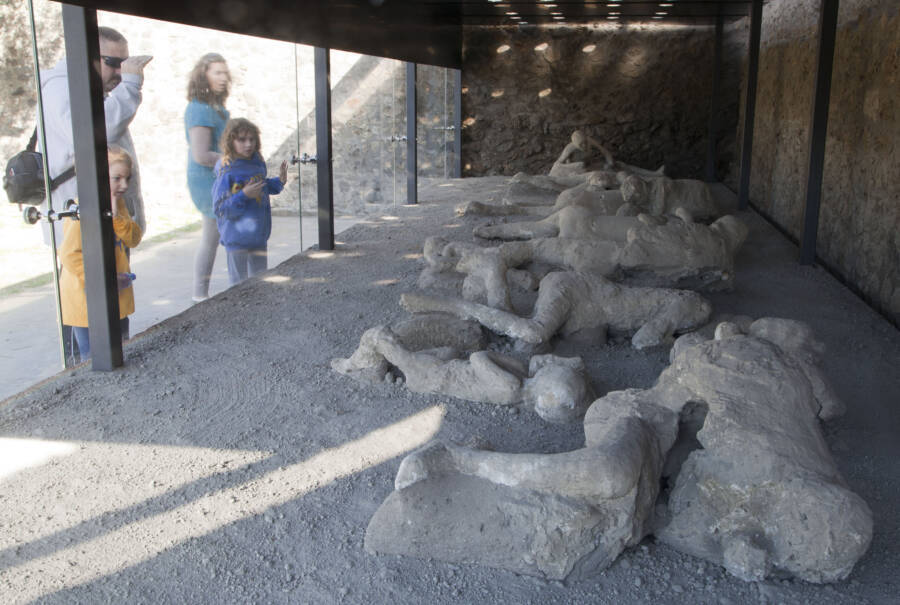
CARLO HERMANN,CARLO HERMANN/AFP via Getty ImagesToday, “The Garden of the Fugitives” in Pompeii contains 13 bodies of Mount Vesuvius victims.
Archaeologists have also uncovered many fuller skeletal remains. In Pompeii, some of the people whose skeletal remains were left behind died during an early phase of the Mount Vesuvius eruption, and they were likely killed by falling stones or collapsing roofs and walls.
In Herculaneum, hundreds of skeletal remains were also discovered where some victims had taken cover in boathouses and the beach. These people likely died of thermal shock during the pyroclastic flow — red and black staining in their skulls suggests that their brains may have boiled. Equally gruesome, one victim in a different Herculaneum building was found to have had his brain matter transformed into hard, twisted, glassy bits.
Interestingly, recent research shows that an earthquake may have simultaneously occurred as the volcano erupted, meaning that some victims may have died due to damage brought on by the earthquake.
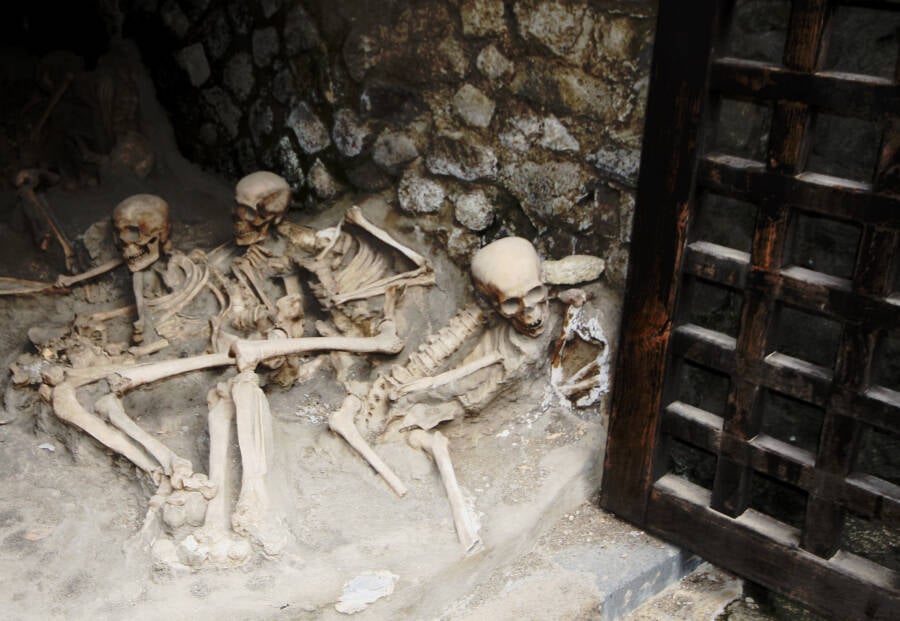
Public DomainHundreds of skeletons were discovered in boathouses in Herculaneum, where people had seemingly tried to take cover during the eruption of Mount Vesuvius. They perished when the volcano’s pyroclastic flow smashed through the beach.
The exact cause of death for many Vesuvius victims remains a subject of debate. Some experts believe that most people died due to asphyxiation from volcanic ash, while others claim that burning gas vaporized victims’ bodily fluids, essentially boiling them to death from the inside out.
But as experts have tried to piece together victims’ final moments, archaeologists have also uncovered many other incredible things in Pompeii. The thick layers of volcanic ash meant that many structures and items were preserved almost completely intact, providing researchers with a unique snapshot of what the city looked like at the moment of the disaster.
Archaeological Discoveries At Pompeii
Some archaeological discoveries in Pompeii speak to greater Roman history — like the villa that might have belonged to Emperor Augustus — but most offer a peek at what daily life was like for the rich and for the poor.
The wealthy people of Pompeii left behind elaborate spaces, like a recently discovered “blue room” that may have been used to store religious objects. Their villas were decorated with frescoes, like the ones found at a banquet room that depicted scenes from the Trojan War — or the walls decorated with erotic frescoes found at the House of the Vettii.
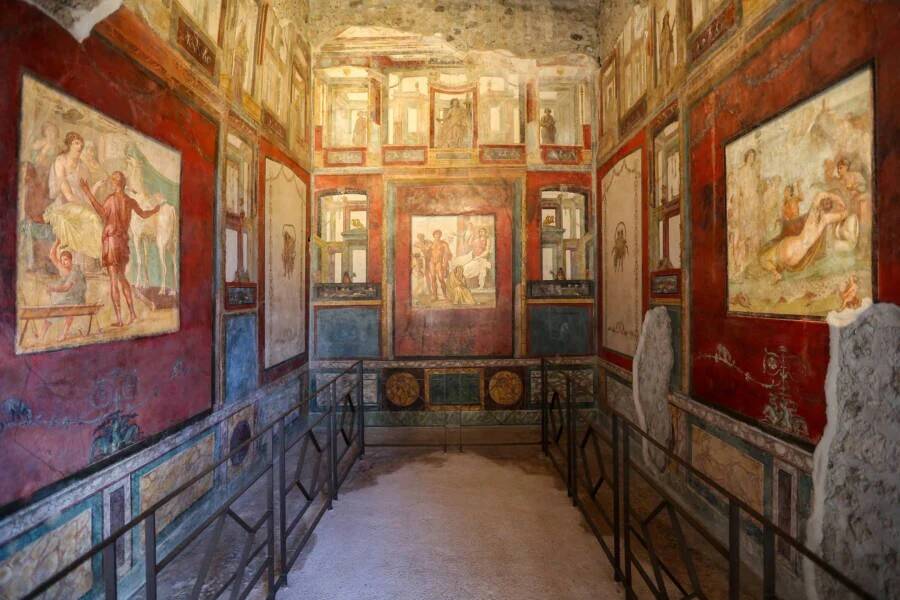
Marco Cantile/LightRocket via Getty ImagesRestored frescoes at the House of the Vettii.
Archaeologists have also uncovered traces of Pompeii’s poorer citizens, like a tiny “slave” room with three beds and one small window. Recently, they also uncovered the remains of a mat-making workshop and a “prison bakery” where enslaved people and donkeys torturously toiled to make bread.
Other finds, like graffiti of gladiator battles left by children or raunchier graffiti left by adults speak simply to the human nature of Pompeii’s civilians.
Throughout the years, many valuable artifacts have also been uncovered in Herculaneum, such as charred ancient scrolls, some of which are in the process of being decoded with artificial intelligence.
Though discoveries like these have shed light on life in ancient Pompeii and other Roman settlements before the eruption, excavations are ongoing — and many questions about life in the doomed city still remain. In fact, questions also remain about the eruption of Mount Vesuvius, from exactly how many people died to what specifically caused most victims’ deaths.

Wolfgang Moroder/Wikimedia CommonsThe most recent Mount Vesuvius eruption was in 1944, and it’s unclear when it will erupt again.
It’s still not even clear which day the volcano erupted. Translations of Pliny’s letters cite August 24th as the start of the eruption. But archaeologists have found evidence that people in Pompeii were wearing heavier clothing during the eruption, and they were eating pomegranates and walnuts, which are harvested in the autumn. Because of this, it’s possible that the Mount Vesuvius eruption came later, perhaps in late October or early November.
Whatever the month, the eruption of Mount Vesuvius in 79 C.E. was a tragedy that has led to some incredible archaeological treasures. The volcanic eruption that coated Pompeii and Herculaneum in ash also preserved their roads, structures, and even some residents. Finds like these paint an astonishingly clear picture of what life was like nearly 2,000 years ago — and they offer an eerie warning about how life can change in an instant.
After reading about the Mount Vesuvius eruption, learn history’s most devastating natural disasters in human history. Or, discover the stories behind some of the largest volcanic eruptions ever.





